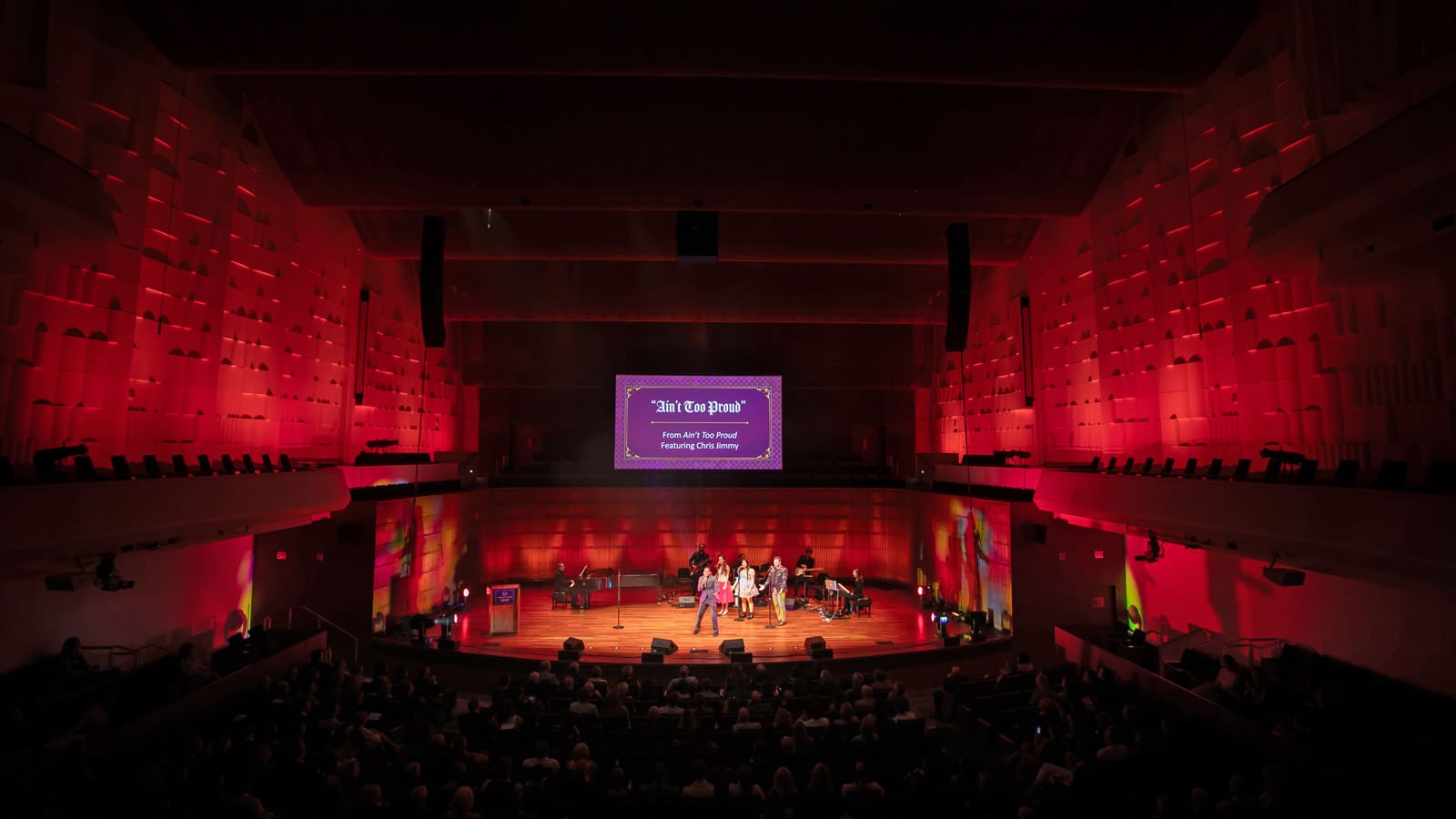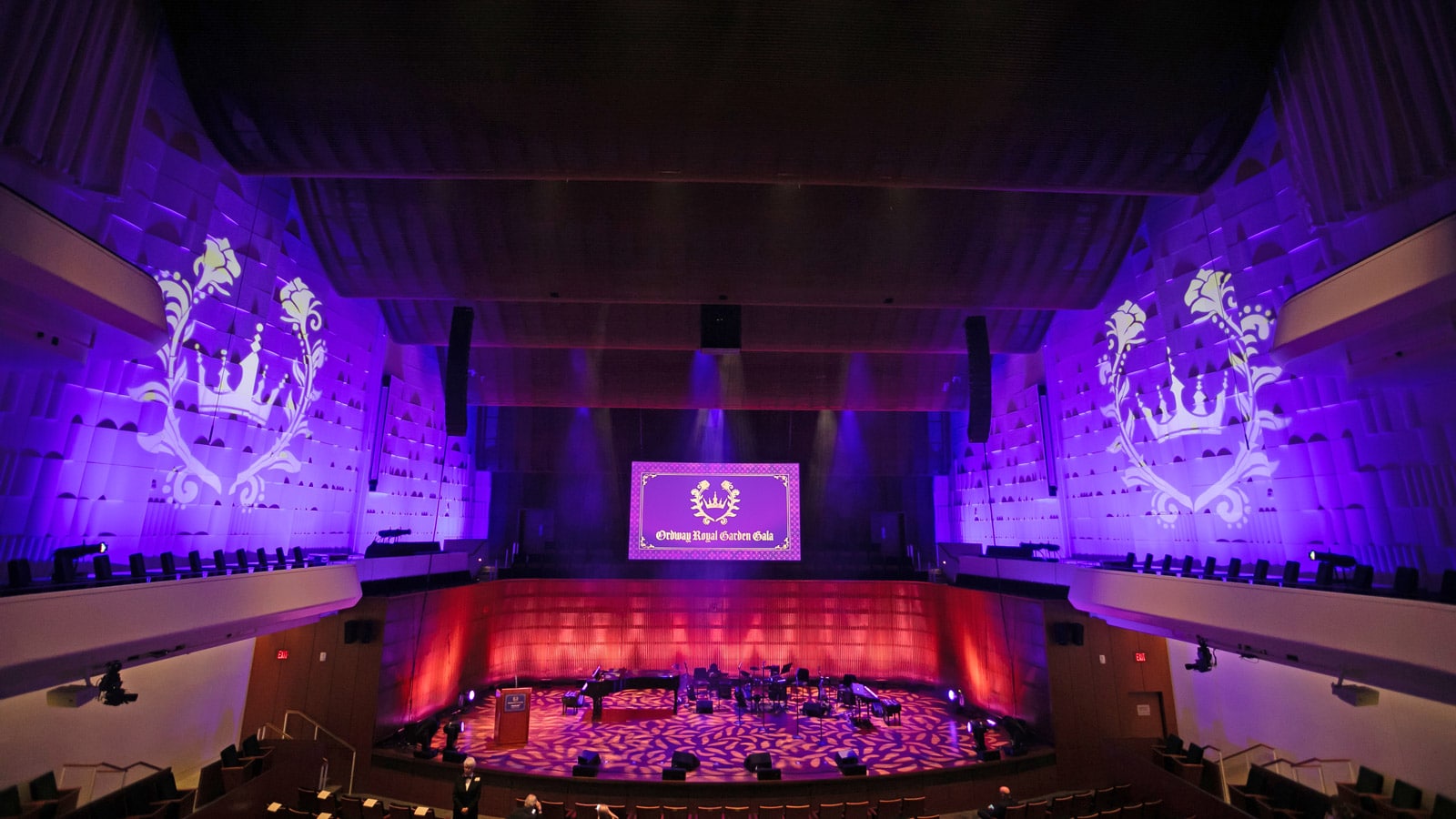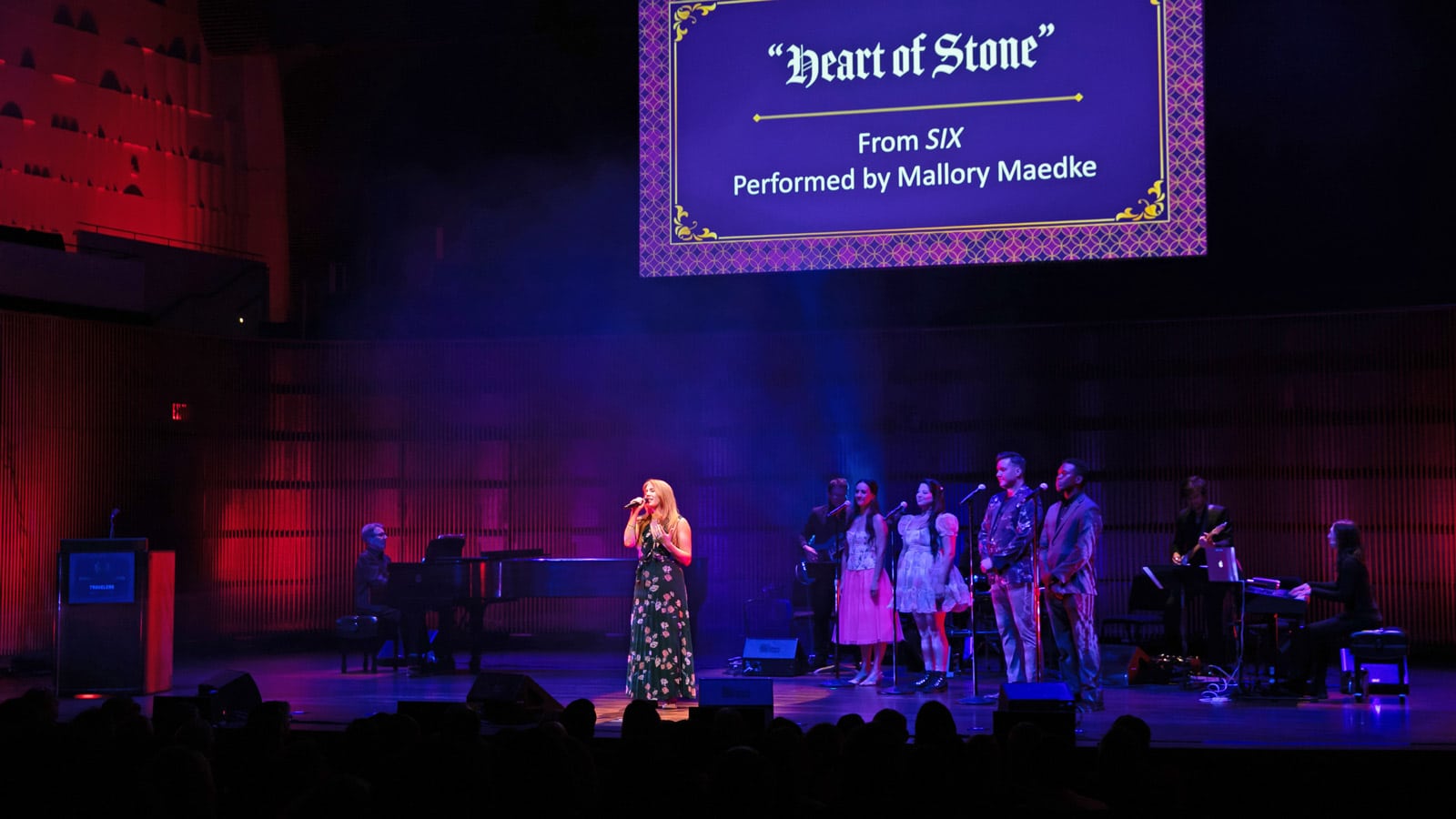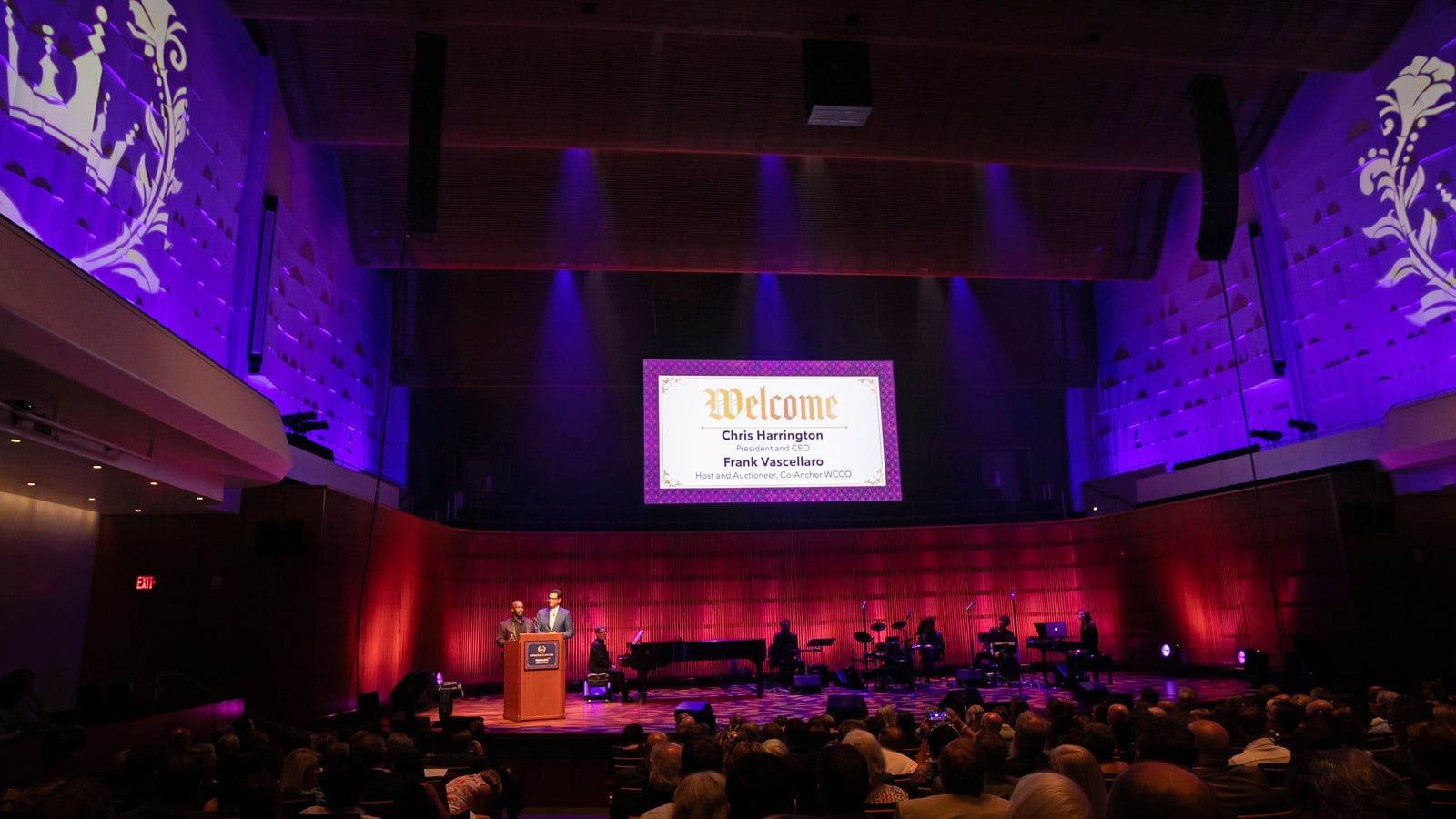Now, we have a modern-looking, modern-sounding sound system. To have a system like this, in tandem with the recording facilities that serve the Concert Hall, will go a long way to help bring more activity into the space.”
Andy LuftVP of Building Operations and Production, The Ordway
The Ordway Center for the Performing Arts in Saint Paul, MN, one of the U.S.’ leading not-for-profit performing arts centers, elevated its audio capabilities with a new Meyer Sound LINA system, provided by Lake Forest, IL-based supplier TC Furlong Inc.
Founded in 1985, the Ordway is home to several arts organizations, including the Minnesota Opera, the Saint Paul Chamber Orchestra, and the Schubert Club. The bustling center serves 400,000 people annually with nearly 500 performances in its Music Theater and Concert Hall.
The Ordway’s Concert Hall, which received the upgrade, opened in 2015, replacing a smaller venue, the 306-seat McKnight Theater. The 1,100-seat venue hosts diverse programming from orchestral music to spoken word to Broadway Musicals in Concert, rock, jazz, and world music. Designed by renowned acoustician Paul Scarborough and Tim Carl of HGA Architects, to support classical music, the hall exhibits a 1.8-second reverb time and features dampeners that allow acoustic flexibility. But like most venues designed for acoustic music, the space presents challenges for managing amplified music.
“So many acoustic venues across the country have low-frequency deployment issues,” says Collin Sherraden, the Ordway Concert Hall Head Audio Engineer. “Our venue is absolutely no different in that it’s designed to in essence amplify the low end coming off the stage. So control was a huge consideration.
“There’s a lot of volume in this room, and half of it you don’t even see — above the ceiling, the catwalk space, and other infrastructure space above that,” he explains. “We have to give serious consideration to what we are doing with the space above the arrays because there’s 40 feet of air.”
When it came time to upgrade the hall’s Meyer Sound CQ Series system — a holdover from the previous venue, originally installed in 1985 — the team sought a low-profile system that minimized visual interference yet would support a broad range of programming, and a new Meyer Sound system topped its wish list.
Meyer Sound’s Brian Bolly, working closely with Collin Sherraden, designed a system centered around LINA very compact linear array loudspeakers, 2100‑LFC low-frequency control elements, and ULTRA‑X20/22 compact wide-coverage point-source speakers. TC Furlong, founder of TC Furlong Inc., set up a demo system onsite. After just a few listens, the Ordway team was convinced. “When we got to the demo, and even just with preliminary tuning, we all knew, ‘this is the one,” says Andy Luft, the Ordway’s VP of Building Operations and Production. “We don’t have to go any further than LINA.”
The new system comprises dual arrays of 16 LINA loudspeakers, supported by three 2100-LFC low-frequency control elements suspended in a forward/rear/forward-facing gradient array, and 12 ULTRA-X20/22 fills. Everything is managed by the Meyer Sound Galileo GALAXY Network Platform. “The three-sub array is great because now we can steer low end, at least to a point,” says Sherraden. “It’s really great working with a set of speakers that reacts to minuscule changes in processing, where if we go up to that second high balcony and get overwhelmed with low end, we just move it down. It reacts so well, it’s remarkable.”
The fills brought cohesive coverage to mezzanine and under-balcony areas that had previously felt sonically disconnected. “They really did an excellent job of making it feel like you weren’t out of the PA even though you were,” says Furlong.
The full system is deployed as needed for high-SPL applications; a left/right pair of ULTRA-X20 loudspeakers set atop 750‑LFC control elements supports performances without high-SPL requirements. “Brian Bolly came up with an inventory of equipment that makes it very flexible to work in that room and meet the needs of the programming without having to deploy the entirety of a 32-box system,” says Luft. “That includes mixing and matching and interfacing with gear that was originally installed in 2015 as well.”
Because the system is modular and temporary, ease of deployment is essential. “Things like how many people does it take to install, how long will that take, and where the system is stored, are all huge factors because they drive costs,” Luft says.
Furlong says the system’s linearity and uniformity streamline the process. “Meyer Sound has, in my opinion, the best record for uniformity from speaker to speaker, whereas other products might not have the same close tolerances. With this system, you don’t have to put speakers up in the exact same order that you originally calibrated the system with.”
And, it’s now easier to dial in an optimal sound, adds Sherraden. “The system reacts so cleanly; I can make small, pinpointed changes and get the reaction out of the system that I want, which is great.”
“My hope when we built the place was always that we could promote this facility as a destination facility,” says Luft. “Now, we have a modern-looking, modern-sounding sound system. To have a system like this, in tandem with the recording facilities that serve the Concert Hall, will go a long way to help bring more activity into the space.”
“We have LINA loudspeakers in our rental inventory, so we know what they can do. And we’re always impressed by them,” adds Furlong. “But getting the system into a theater setting like this was great because they sound much bigger than they are. They have a lot of output for a box that’s so small.”
He adds that because the new system is so versatile and rider-friendly, the Ordway can accommodate increasingly diverse programming. “That system checks all the boxes for everybody who comes in that room.”





